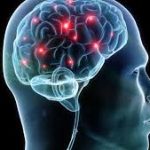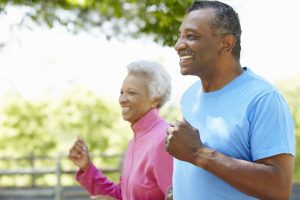Parkinson’s disease (PD) is the second most common neurodegenerative disease, only behind Alzheimer’s disease. Neurodegenerative means that it involves a progressive breakdown of brain matter. Multiple different neurological channels are affected. This creates wide-ranging effects on the body and mind including: sleep disturbances, muscle tremor, and forgetfulness. The progression of symptoms is also unique to each person and develops slowly over years. These typical symptoms will be discussed further with corresponding treatments:
- Bradykinesia: is one of the cardinal manifestations of Parkinson’s disease. Early on, tremors may be noticeable and this eventually leads to to a generalized slowness of motion. These slower automatic responses and movements limit mobility, e.g. the ability to start walking after stopping or getting out of a car.
- Rigid movement: Robot-like movements of the arms and legs are distinguishable as Parkinson’s develops. Also note the lack of arm motion during gait as a telltale sign.
- Gait and balance problems: The previously mentioned symptoms will likely manifest in walking ability. Walking speed may remain normal, however less trunk rotation, less arm swing, and slower turns are all symptoms of the disease.
- Cognitive impairment is one of the most prominent and difficult to measure features of PD. 25% to 30% of Parkinson’s patients have cognitive deficits at the onset of the disease and 50% demonstrate significant cognitive decline in the first three to five years of illness.

Let’s Talk Treatment Options
There is ambiguity around the best treatment options for people with Parkinson’s. This is likely because so little is known about the cause and even less about the cure.
The literature suggests that the effects of PD can be greatly curved by pharmacological treatment. However, drug treatments only provide relief of the symptoms, and do not stop the progression of the disease. Since medications don’t fix the root problem it’s comparable to putting a drip pan under your oil leak. Effective non-pharmacological treatments include everything from tai chi to weight training to surgery. Nevertheless, it’s important to include exercise treatment for a long and fulfilled life with Parkinson’s. Let’s check out each symptom paired with an exercise-based treatment option. Remember to consult your local Physical Therapist for a more fine-tuned approach to your treatment.

More Neurons, Better Cognition
Mild cognitive impairment affects between 18.9 and 38.2% of patients in the early stages of the disease. Exercise contributes positively to non-motor deficits (behavior, mood, cognition) in relation to Parkinson’s disease. An adequate dose of physical exercise creates more resilient brain neurons. This in turn reduces the negative spectrum of cognitive impairments to promote:
- Stable mood
- Sustained attention span
- Mental flexibility
A recent study reveals the best physical exercise for mild to moderate stage Parkinson’s – Treadmill training performed 3 times a week for about 60 minutes for a period of 24 weeks produced the largest improvements in cognition.
We also know that dual-task cognitive challenges can be difficult for people living with Parkinson’s. Dual task requires individuals to perform two tasks simultaneously. An example of a dual task challenge is walking walking and carrying a bag. A diminished capacity for dual task performance reduces your ability to adapt to the environment as it changes around you. For instance, when the streetlight turns from green to yellow, your decision-making ability to adjust speeds will be compromised. Now we can get even more from your 60-minute walks.
Try to compound the positive effects of walking with the mental stimulation of a conversation with a friend or loved one. Combine an engaging conversation with the aerobic benefits of prolonged walking to ward off cognitive decline for good.

Weight Training to Curb Slowed Movements
Remember that bradykinesia may start with a tremor in the legs or hands. It invariably progresses to an overall slowness of motion. You may notice that you are slower to get out of a car, or unable to keep up with your grandchildren. The way to combat this slowness or rigidity is through challenging the speeds of exercise. Weight training, yoga, or tai chi all improve your ability to turn muscles on and off simultaneously. Challenge the slowness of motion with fast transitions and quick spurts of motion. A Physical Therapist can specifically design a weight training or yoga-type movement class to keep your motion sharp. Don’t expect super fast carryover though. The studies support a 3-month training cycle at minimum to maximize benefits in clients with mild to moderate Parkinson’s disease.
In Summary
Remember that the physical and mental presentation of your Parkinson’s condition is extremely unique to you. Your physical therapist will create an individualized treatment plan to attend to your compensations and deficits. For instance, the differences between slow movement and rigid movement certainly require a more fine-tuned approach.
CITATION
Da Silva FC, Iop R da R, de Oliveira LC, et al. Effects of physical exercise programs on cognitive function in Parkinson’s disease patients: A systematic review of randomized controlled trials of the last 10 years. Ginsberg SD, ed. PLoS ONE. 2018;13(2):e0193113. doi:10.1371/journal.pone.0193113.
Oliveira de Carvalho A, Filho ASS, Murillo-Rodriguez E, Rocha NB, Carta MG, Machado S. Physical Exercise For Parkinson’s Disease: Clinical And Experimental Evidence. Clinical Practice and Epidemiology in Mental Health : CP & EMH. 2018;14:89-98. doi:10.2174/1745017901814010089.
Park J-H, Kang Y-J, Horak FB. What Is Wrong with Balance in Parkinson’s Disease? Journal of Movement Disorders. 2015;8(3):109-114. doi:10.14802/jmd.15018.
The information provided on this site is intended for your general knowledge only and is not a substitute for professional medical advice or treatment for specific medical conditions. You should not use this information to diagnose or treat a health problem or disease without consulting with Heather Lane Physical Therapy or another qualified healthcare provider.

